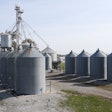
The feed industry is critical to sustainable food production. New developments in feed additives, processing technology and animal nutrition continue to add to the productivity, efficiency, environmental sustainability and safety of feed production. However, with a rapidly growing population, a changing socioeconomic climate, increasing consumer demand and a continuous pursuit for greater efficiency, this $460 billion industry must continue to evolve.
The cost of feed alone demonstrates a need for companies to re-evaluate and improve feed efficiency. Advancements in raw materials may result in novel feedstocks that change the entire approach to feed formulation. The inexpensive feed options traditionally given to ruminants are limited, and the future alternative is a carefully formulated feed aimed for greater efficiency in monogastrics and ruminants.
Consumer influence
Consumers are becoming more selective in purchasing meat, milk and eggs, questioning what their animals eat and how they are kept. They see the feed mill as integral in the food chain and influencing human diet.
Today’s culture wants to know exactly what medicines, practices, supplements and feedstuffs go into the animals they consume. In the future and even already, greenhouse gas emission and environmental impacts of animal production will also be considered, pushing the feed mill and farm efficiency forward.
Food safety continues to be a serious concern as today’s feed may contain hazards, such as heavy metals, high dioxin levels, PCBs and mycotoxins. Over time analytical detection methods will become more sophisticated and provide more rapid results, allowing the industry and government to react to ensure food safety.
Concerns about food safety and quality at every stage in feed production will drive companies to be increasingly more transparent. Government regulations, such as the Food Safety Modernization Act (FSMA) in the United States, will enforce risk-based preventative animal food safety systems.
The digital age and the feed industry
In the future, feed systems are likely to become even further intertwined with information technology, eventually allowing for a flow of detail throughout the steps in the food chain when farm, feed mill, processing plant and consumer are connected. In this way, feed availability will be able to mirror demand and in doing so dramatically increase efficiency and reduce waste.
Widespread digitalization will lead to on-farm measurements and monitoring done in real-time. Systems in place for measuring environmental gases, excretion on land and other biological and chemical parameters will be useful in documenting the effects of nutrients on animal health, thus providing insight for necessary changes in diet strategy.
As we develop more advanced technologies for controlling digestion and nutrient utilization, traditional ways of formulating feeds based on compositional analyses will play a less important role defining feed formulation. These fine control mechanisms will be coupled with our ability to collect information about all aspects of the food chain and will define a new level of proactive precision feeding. This will open the door to the use of new feed ingredients, long term nutritional conditioning and other novel supplement strategies.
Nutrigenomic approaches will become standard for understanding both nutritional and environmental factors hindering production efficiency and welfare. This information will afford a new level of precision in feed formulation and livestock production. Subsequently, feeds will be closer to achieving genetic potential by targeting genes involved in animal growth rate, disease prevention and meat quality. Results from these studies will identify anti-nutritional activity and define feeding strategies that take advantage of the natural conditioning processes associated with prenatal and perinatal feed management practices.
Equipment advancements
The feed mill, itself, will become ‘smarter’ with the use of NIR technology. This will allow for the analysis of incoming raw materials in real time, allowing reformulation of the diets on a minute-by-minute basis to ensure consistency of each batch. Additionally, rapid, in vitro digestion modeling systems will provide new ways of defining the true nutritional value of raw materials as well as the final feed products leaving the feed mill. These advanced systems can be used to define nutrient interactions and provide more accurate descriptions of nutritional values.
Today, a typical Western feed mill producing 100,000 tons of feed might involve one-and-a-half to three people. In a country like China, the same feed mill would require the labor of 45 individuals. This trend toward greater labor efficiency will continue so that future feed mills can be fully automated and a single person can run a relatively large feed mill alone.
In the future, there is potential to apply artificial intelligence to analyze data and make immediate adjustments based on system inputs.
Advancements are likely to occur in the pelleting process so that what is now considered an art might become more of a science. By controlling more of the parameters involved in pelleting and cooling, there is opportunity to reduce costs, improve feed quality and assure food safety.
Key ingredients
The rate at which any of the aforementioned solutions are adopted by the industry is dependent on the challenges it faces. The immediate approach of the feed industry is to improve animal performance characteristics, minimize feed costs and maximize feed production efficiencies, often through key ingredients.
One possible ingredient that could become commonplace to feed formulation is algae: a source of protein, oils, pigments, vitamins and starch. Emerging technology positions algae to become a major, nutritionally rich biomass, and it is already known as a prime source of omega-3 fatty acids. Initial trials utilizing algae have produced results showing improvements in both reproductive performance and nutritional value of meat.
Supplemental enzymes, now commonly used to improve the nutritional value of most commercial feeds, will become more functional under a variety of feed manufacturing conditions and feed system strategies for different animal species.
Commercial blends of phytase, carbohydrase, lipase and proteases will continue to evolve for different feed applications. Solid state fermentation (SSF), an ancient technology with new technique and application, will be used for growing enzymes directly on feedstuffs. SSF makes it possible to produce a custom enzyme cocktail that can be used for improving digestion of feedstuffs, which enhances animal health, performance and profitability.
Laying the groundwork for the future
In conclusion, the future of the feed industry truly lies in its ability to meet consumer demands for safety and sustainability, while increasing efficiency and productivity to feed nine billion people in 2050.
Consolidation of the over 31,000 feed mills will continue, potentially reducing numbers by 50 percent in the next ten years.
Analytical technologies, such as NIR, advanced in vitro fermentation modeling, nutrigenomics, and bioinformatics, will intervene in feed formulation so that nutritional value is defined and feed formulation and feed manufacturing become no longer an ‘art’ but a more precise science.


















